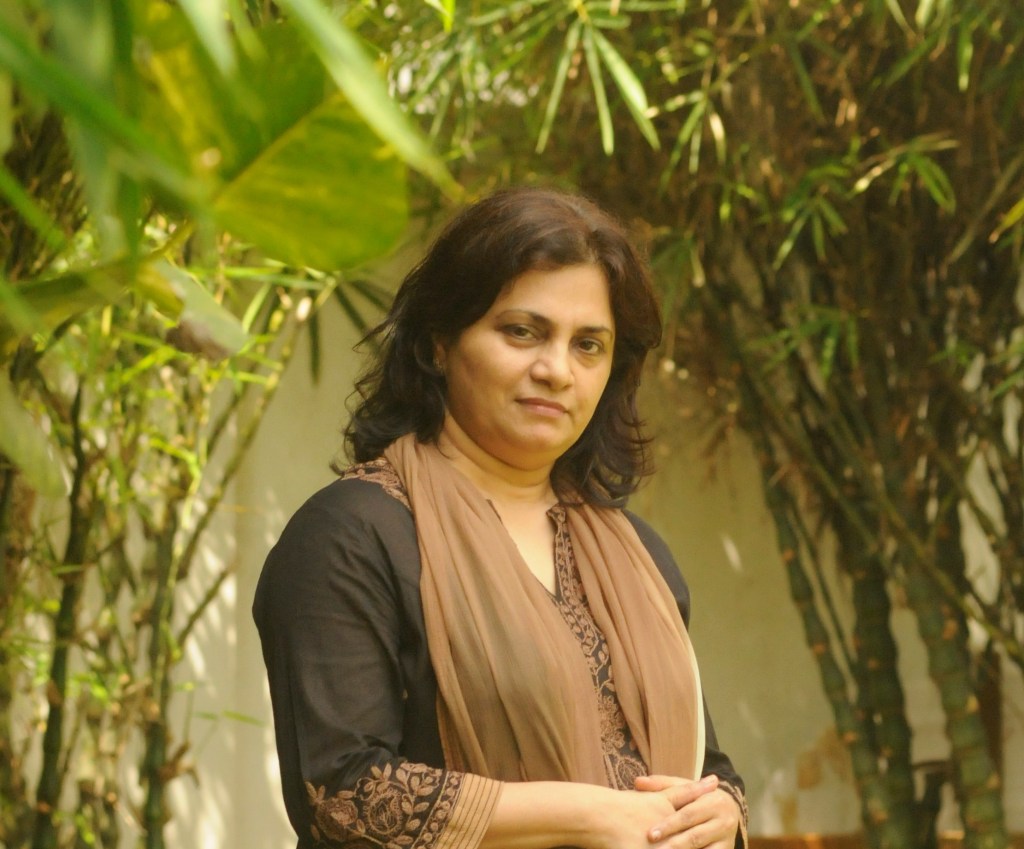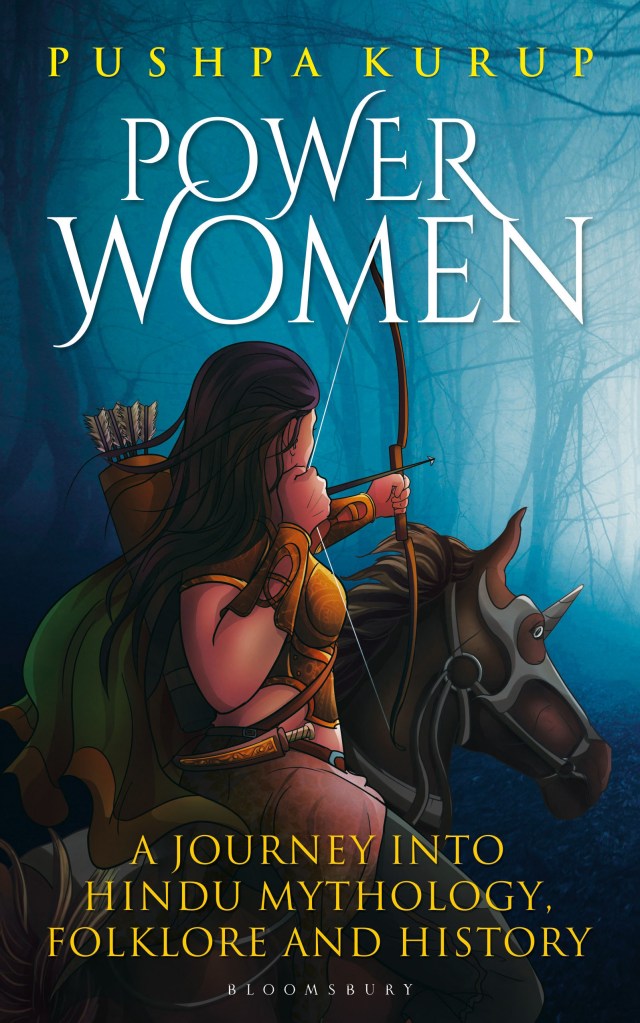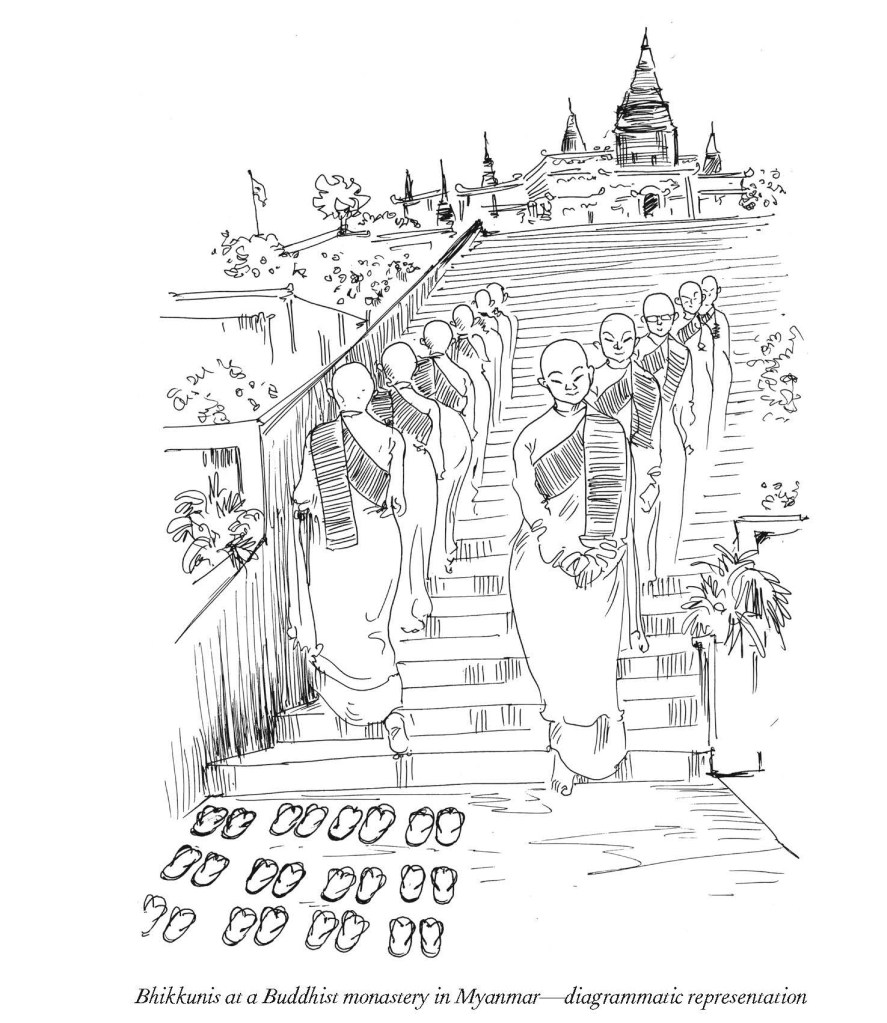By Neha Kirpal
Pushpa Kurup’s new book, Power Women: A Journey into Hindu Mythology, Folklore and History (Bloomsbury, Rs 499) is a brilliant compilation of the powerful and intriguing women of our mythology – from the famous Sita and Draupadi to the lesser known but equally significant Sulabha, Sushobana and more. Daughters, wives, mothers, grandmothers, queens, warriors, cholars, bhikkunis and sanyasinis… all of these splendid women find space in this book.
We asked Pushpa about how her book hopes to break common stereotypes about women in mythology, why women’s role in mythology has been traditionally sidelined in the past and what the current generation of young women can learn from some of these ancient characters.
How did you decide to write this book? What were your primary sources of research and what did you specifically set out to look for?
Many of the thoughts I’ve shared in this book had been floating around in my mind for years. I’d published a few newspaper articles on related subjects, but in 2019 I felt there were many more secrets to be uncovered and I ought to research the content for a book. Not knowing Sanskrit was a minor hassle, but I went around reading a whole lot of translations. Whether it was the Ramayana or the Mahabharata, the Upanishads or the Manusmriti or even the Arthashastra, I was rereading the books from a purely feminine perspective.
The process of discovery was truly exciting. I discovered how little I knew!
Please tell us a little about some of the lesser-known mythological women whose stories you have included in the book, and what impacted you personally the most about their stories.
Sathybhama, one of Krishna’s eight principle wives, is well known. But what we know about her is that Rukmini always got the better of her, and that there was a rivalry among the co-wives. We have heard of her dialogue with Draupadi. We know the story of the parijatha flower. I’ve included the lesser-known story of Krishna’s thulabharam in this book. But the most important fact about Bhama is her role in the killing of Narakasura. Was she the one who killed the demon? Why does everyone say it was Krishna who killed Narakasura?
Madhavi’s story was a revelation in more ways than one. It showed me that our epics have many layers of meaning. Horsetrading, men and their lack of morals, forgiveness, anger management, vanvas, swarga and moksha – several themes are explored here.
Sati Sulochana, wife of Indrajit; Ganga, the wife of King Shantanu; Hidimbi, Bhima’s short-term wife – these are some of the characters I have focused on. Thathrikutty – the real-life namesake of Savitri – who humbled the Namboothiris of Kerala by disclosing the details of her sexcapades at the dawn of the 20th century is a classic example of a woman wielding power without doing battle. Kannagi could well have been a historical figure but we know her first as a character in an epic poem and later as a goddess.
What are some of the common stereotypes people believe in when it comes to women in mythology, and how does this book hope to break them?
Our ancient texts and folklore actually drew up diverse portraits of women, but as the cliché goes, ‘we see what we want to see’. We still live in a patriarchal world, so it’s natural to perceive women primarily as wives and mothers. Women are supposed to weep, to be docile, to tolerate injustice, to stay at home.
In this book, I make an effort to unmask the true faces of the women. Kaikeyi, Uloopi, Chitrangada and Satyabhama were warriors. Gargi, Maitreyi, and Sulabha were scholars, despite the virtual ban on women’s education. Mirabai was a princess-turned-wandering-minstrel – a real one! So was Avvaiyyar. Women renunciates were common too, especially in the Buddhist and Jain orders.
Why do you feel that women’s role in mythology has been traditionally sidelined in the past? With a number of recent books on the subject, do you feel this narrative is gradually changing?
Literary spaces were dominated and controlled by men in the past. It comes as no surprise that feminine roles were diminished or even filtered out. But in today’s world, thanks to the prevalence of social-media alternatives, every woman on this planet has a voice. If she wishes she can make herself heard, at least by a few. Publishing is no longer a male bastion. It’s hard to estimate the impact of recent books on the minds of the public, but I’m pretty sure the narrative will change sooner or later.
I believe the 21st century will be a turnaround century for women. Women have already changed considerably – and it is now time for men to change.
What can the current generation of young women learn from some of these women characters in mythology?
There are some basic human values that are eternal and immutable – like compassion, forgiveness, generosity, truth and integrity. The highest virtue is not bravery on the battlefield. And the women in the epics have an abundance of virtues of every kind.
Apart from being an author, you were also the managing director of a technology company. How do the corporate and creative sides of your life lend to one another?
I think more creativity is required in the corporate sector! I had a good taste of the public sector as well as the private sector, and I enjoyed every moment. My only regret was that I had very little time to read, and even less time to write.
I started my career as an LIC officer, and went on to become a faculty member in the global training centre of Tata Consultancy Services, before my stint with Vitalect Technologies. In the 17 long years I spent in LIC, I may not have read a single book. It was one mad rush.
From financial services to information technology, from public to private sector, was a tectonic shift. (As I write this, I have a big smile on my face. I could write a few books about my experiences!)
Covid-induced isolation made it possible for me to focus on reading, research and writing. I count my blessings.
I have a keen interest in history, international relations, travel, culture, women’s issues, environment and conservation, religion and folklore. Business, finance, politics and information technology remain in the comfort zone, though I don’t often write on these topics.
Which are some of your favourite contemporary female writers and books that you derive inspiration from?
Those are hard choices to make. Ayan Hirsi Ali’s Infidel, Mariama Ba’s So Long a Letter (translated from the French), Anita Nair’s Ladies Coupe, Kama Maclean’s A Revolutionary History of Interwar India, Manini Chatterjee’s Do and Die, Alice Albinia’s Empires of the Indus and Ulfat Idlibi’s Sabriya – Damascus Bitter Sweet – these are a few of my favourite books.
I rarely read more than one book by the same author. Some years ago, when I realised I was reading only British, American and Indian authors, I took a conscious decision to read authors from every country. It’s been an amazing journey.
On a visit to Vietnam, I bought Last Night I Dreamed of Peace, the diary of Dang Thuy Tram, a woman doctor who got killed during the final stages of the US-Vietnam war. It was heartrending.
If you could be any character from Indian mythology, whom would you choose to be and why?
I don’t know whether Unniyarcha of vaddakanpatu fame belongs to the realm of myth or folklore or history, but for me she’s nearer home, so I guess she’d be my choice. Now don’t get me wrong! It’s not because I feel a fighting career is better than a writing career.
If I could be reborn, I’m sure the 21st century is the best time. More freedom, more fun! (If I wait until the next century, I may never get to see an elephant or a tiger. To see a cheetah in this century, I had to go all the way to South Africa!)





good Work Medam . best wishes
LikeLike
A COMMENDABLE ATTEMPT OF PROFOUND ILLUSTRATION OF WOMANHOOD FROM MYTHOLOGY TO MODERN WORLD OF ANCIENT INDIA DEPICTING THE SAVAGE MENTALITY OF BIFARCATING EQUALS AS UNEQUALS .
LikeLiked by 1 person
Awesome !!!………… Loved the title ma’am ……….ive always felt that women are more evolved beings and perhaps have immense patience and the ability to forgive and are far more empathetic….but her internal core is a superpower…..and not to be triggered or tested……..
LikeLiked by 1 person
Awesome Pushpa! So very proud of you!
LikeLiked by 1 person